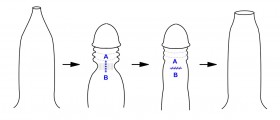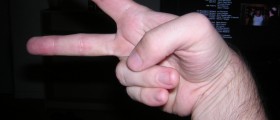So , i am 20 and I never really retracted my foreskin til now, i may had a tight skin and it was difficult to pull it back over the glans, but after few weeks of stretching I finally got it to retract fully and there was lot of smegma collected over the years. I cleaned as much as I could and then I had to manually bring my foreskin to cover my head. I tried twice after that and each time I was able to get it retracted(not without a lil discomfort) but later it won't go back and cover the tip on its own. I have to manually stretch it and bring it over the glans and then after many tries cover the tip. So is it sign of paraphimosis or is it normal when you first get your foreskin retracted
(Also , there is stil a lil smegma left.. could that be the reason?)
Loading...
It's not uncommon to experience some difficulty retracting the foreskin for the first time, especially if it has been tight or adhered to the glans (the head of the penis) due to a condition known as phimosis. Phimosis is a condition where the foreskin is tight and cannot be easily retracted over the glans. However, it's essential to differentiate between normal difficulties due to tightness and paraphimosis, which is a medical emergency.
Paraphimosis occurs when the foreskin becomes trapped behind the glans after being retracted, and it cannot be easily brought back to its normal position covering the glans. This can lead to swelling and pain. If you can manually bring your foreskin back over the glans without significant difficulty or discomfort, it is less likely to be paraphimosis. However, it's still important to be cautious and avoid forcing the foreskin, as this could potentially cause injury.
Here are some steps to consider:
-
Continue stretching exercises: Gradual and gentle stretching of the foreskin can help improve its elasticity over time. You've already made progress, but it may take more time and patience to achieve a fully retractable foreskin.
-
Maintain good hygiene: Ensure that you continue to clean the area, including removing any remaining smegma. Smegma buildup can contribute to discomfort and difficulties with foreskin retraction.
-
Consult a healthcare provider: If you continue to experience problems with foreskin retraction or discomfort, it's a good idea to consult a healthcare provider, such as a urologist or a general practitioner. They can provide a more accurate assessment and recommend appropriate treatments or interventions, which may include topical steroids, further stretching exercises, or, in some cases, a circumcision or preputioplasty (a procedure to widen the foreskin opening).
Loading...
















